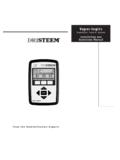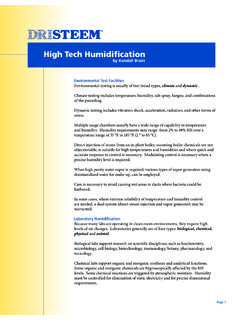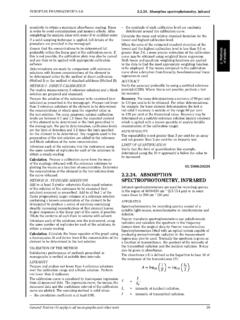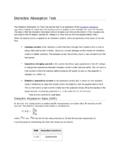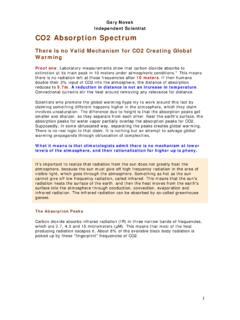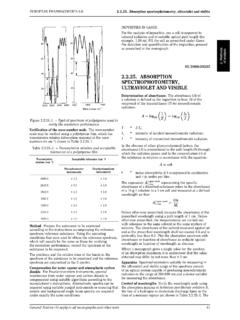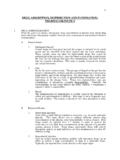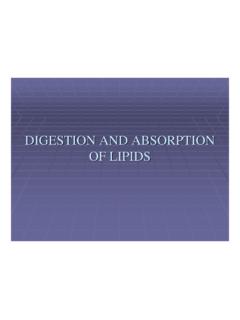Transcription of Engineering Humidification - dristeem-media.com
1 F O R A B E T T E R E N V I R O N M E N TEngineering Humidificationfrom DRI-STEEM Humidifier CompanyEducation SeriesHow to design for proper Humidification steam absorptionThe subject of indoor air quality continues to occupy the spotlight in the HVAC industry. Numerous studies have opened new vistas of thinking by pointing out health hazards that stem from what have recently been discov-ered to be improperly designed or maintained HVAC systems.
2 These discoveries have led to new industry stan-dards. These, along with the possibility of air contamina-tion lawsuits, have resulted in changes in certain HVAC design criteria for public buildings. There is little ques-tion that today even higher demands have been placed on engineers to eliminate the possibility of standing water in ducts or air HVAC systems lead to problemsWhen asked what problems they encounter with humidi-fiers, HVAC engineers frequently cite condensation of steam on internal duct elements as a major problem.
3 If severe enough, the water accumulation can leak from the ducts and cause damage to objects/equipment below. This is an immediate problem that is easily noticeable. A less visible and potentially more harmful situation is a small amount of standing water or condensation on the duct floor. A warm, air handling system containing moist dust becomes an ideal environment for the propagation and distribution of harmful the past decade certain manufacturers have made significant advances in steam humidifier designs.
4 As a result, engineers can now design Humidification systems with predictable steam absorption wet HVAC systemsSeveral elements will affect how quickly steam is absorbed by an airstream. Generally speaking, the higher the relative humidity that must be produced in the air-stream the more difficult the problem. Lower tempera-ture systems of 50 55 F are more difficult to deal with than systems with higher temperatures. And of course, the desired room or space RH enters into this discussion as are solutions The solution involves proper placement of the steam humidifier distribution device, especially in challeng-ing applications.
5 In all cases, steam must be introduced at a point where there is sufficient length of straight, unimpeded duct downstream to permit steam absorp-tion before wetness-producing impingement can take place. However in some buildings, because of structural confines, it is not possible to design long straight sections of ductwork. To facilitate absorption of steam in these instances, use a multiple-tube steam dispersion tubes provide the answerA bank of closely spaced multiple steam tubes is far supe-rior to a single duct tube.
6 In the example shown on the next page, the absorption distance of 9' can be reduced to less than 2' simply by using multiple steam tubes. With multiple tubes, steam is more evenly distributed Step 3. Determine the absorption distance. Depending on the manufacturer selected, there may be a chart or calculation available to determine the minimum distance required for absorption to occur while meeting the desired Humidification level. Without this informa-tion the engineer will not know if the steam coming from the humidifier has sufficient distance to absorb into the airstream before contacting internal duct objects and critical step will determine the location of the steam dispersion device and if multiple steam dispersion tubes are the airstream.
7 This causes a more rapid homogeniza-tion of the steam/air mixture, which results in a faster re-evaporation or second change of state. DRI-STEEM has a variety of steam dispersion devices that deal with absorption requirements ranging from the simplest appli-cation to the most to the basicsPerforming the following steps when designing a humidi-fication system will ensure proper steam 1. Determine the Humidification load. As a general rule, the Humidification load is based only on the amount of outside or makeup air entering a building or buildings without mechanical ventilation systems, the load is usually calculated on the air change (natural) are different methods for calculating load depend-ing on the ventilation system used in the building: mechanical, natural or few tips to keep in mind when calculating humidifica-tion load:1.
8 Building construction. Take into consideration the construction of the building, how often outside doors are left open, and other elements that will affect the air quality in the Outside air percentage. For buildings with ventilating systems operating with a low percentage of outside air (10% or less), it is wise to calculate the load twice. First, calculate load based on mechanical ventilation and second, calculate load based on natural ventila-tion. Use the larger of the two results for determining the 2.
9 Understand factors that affect is affected primarily by three things:1. Duct or AHU temperature. Cool air absorbs less than warm air and will require a longer absorption RH (the difference between entering and leaving RH). The more humidity that needs to be dispersed into the airstream, the longer the absorption Mixing of air and steam. Uneven airflow, non-uniform mixing of steam with air, and the number of steam discharge points on a dispersion assembly affect absorption distance. Steam absorption comparisonThe drawings below show how increasing the number of steam discharge points and/or number of dispersion tubes, shortens absorption dispersionOf the three examples shown here, the single-tube will have the longest absorption dispersionWith the same conditions, absorption will occur in a shorter distance with a multiple-tube dispersion assembly because it has more steam discharge dispersionWith the same conditions.
10 This dispersion assembly will provide the shortest absorption distance. It not only has mul-tiple tubes it has two rows of discharge points on each tube, and also, an additional header for managing 9'Approximately 3'Under 2'RAPID-SORB mid-range steam absorptionThe RAPID-SORB design is an excellent choice for medium capacity systems where multiple tubes are needed to handle the load and/or when the available non-wetting absorption distance is has a steam upflow single header design, and is frequently used with DRI-STEEM evaporative humidifiers such as STS , GTS.






